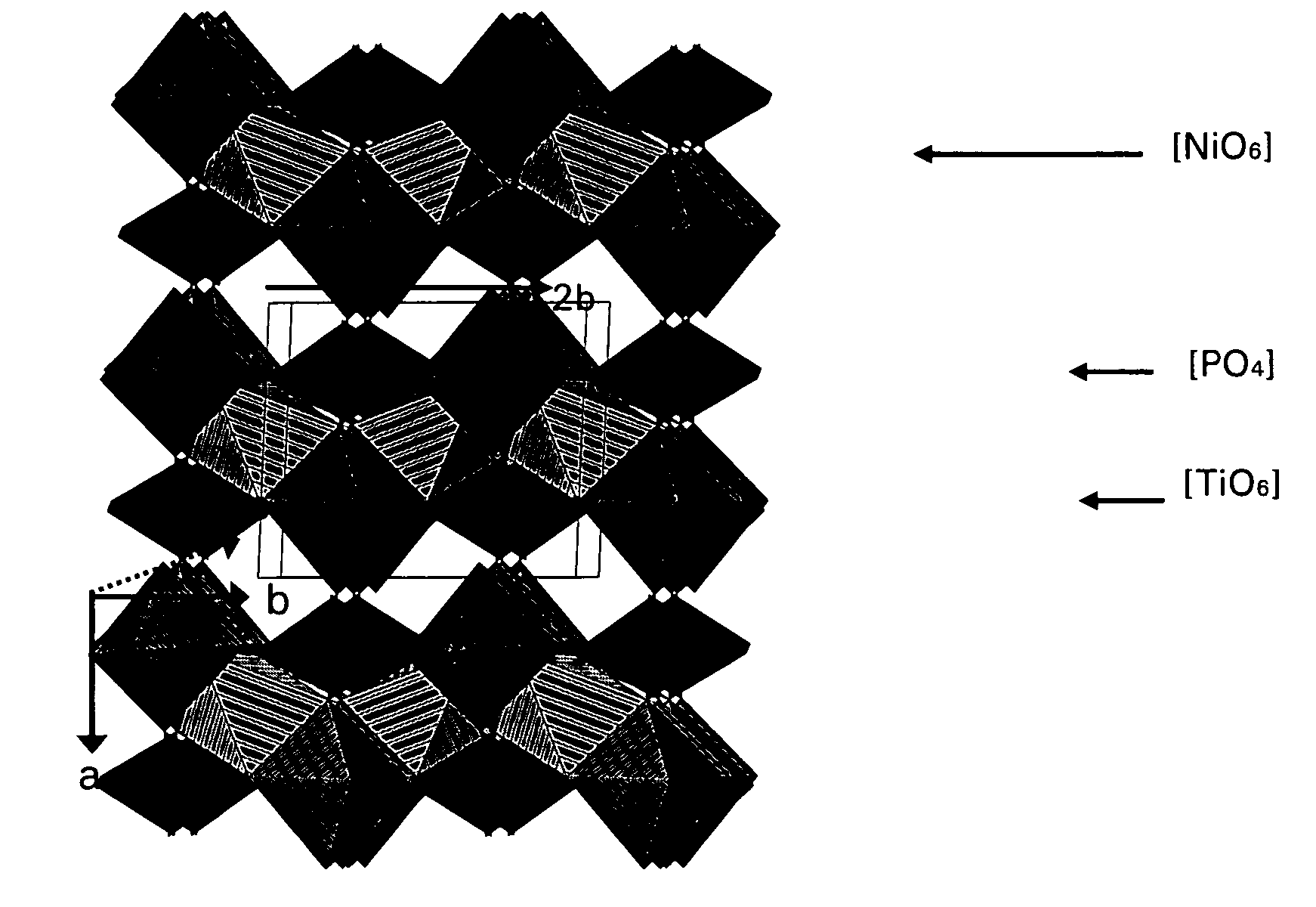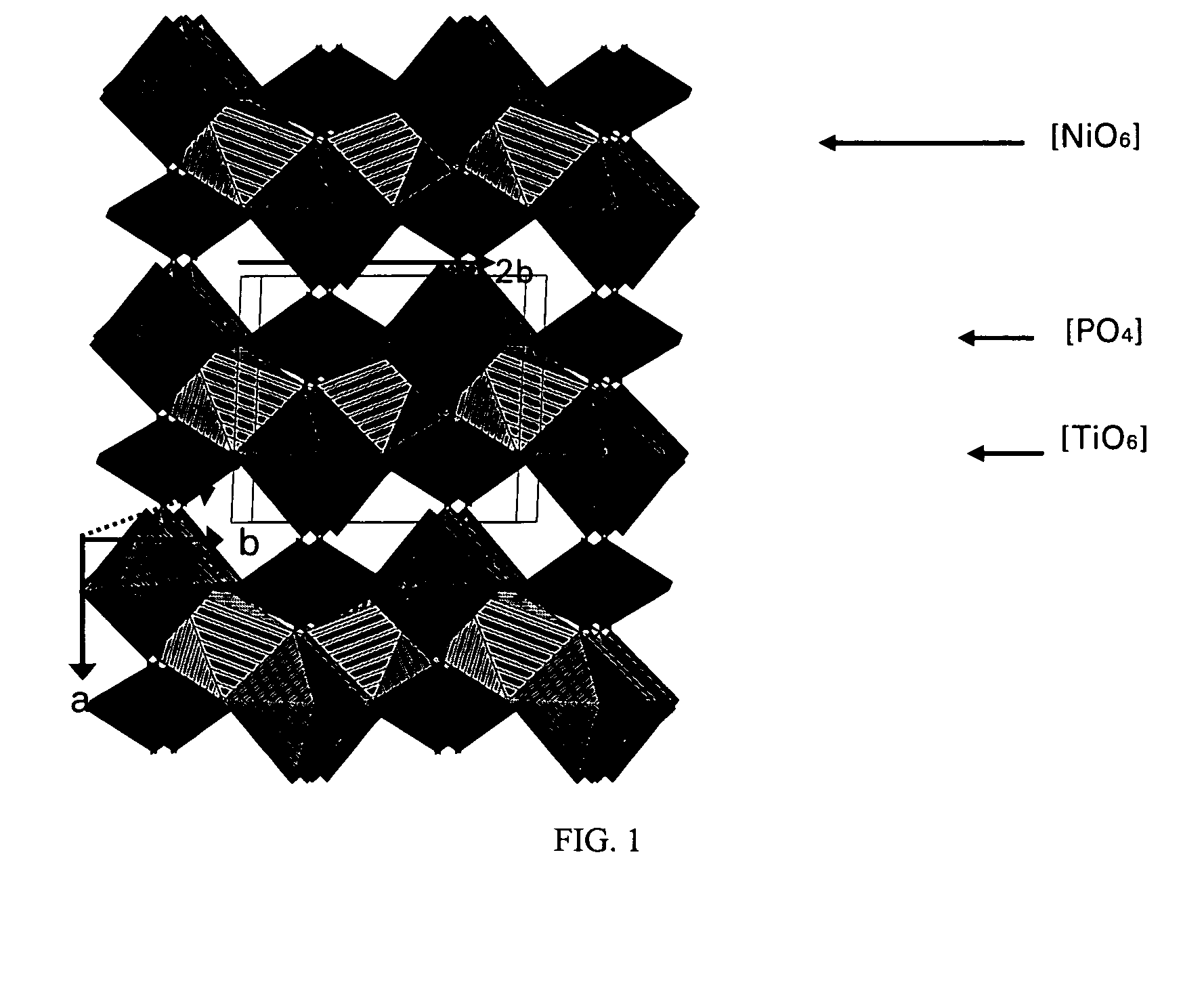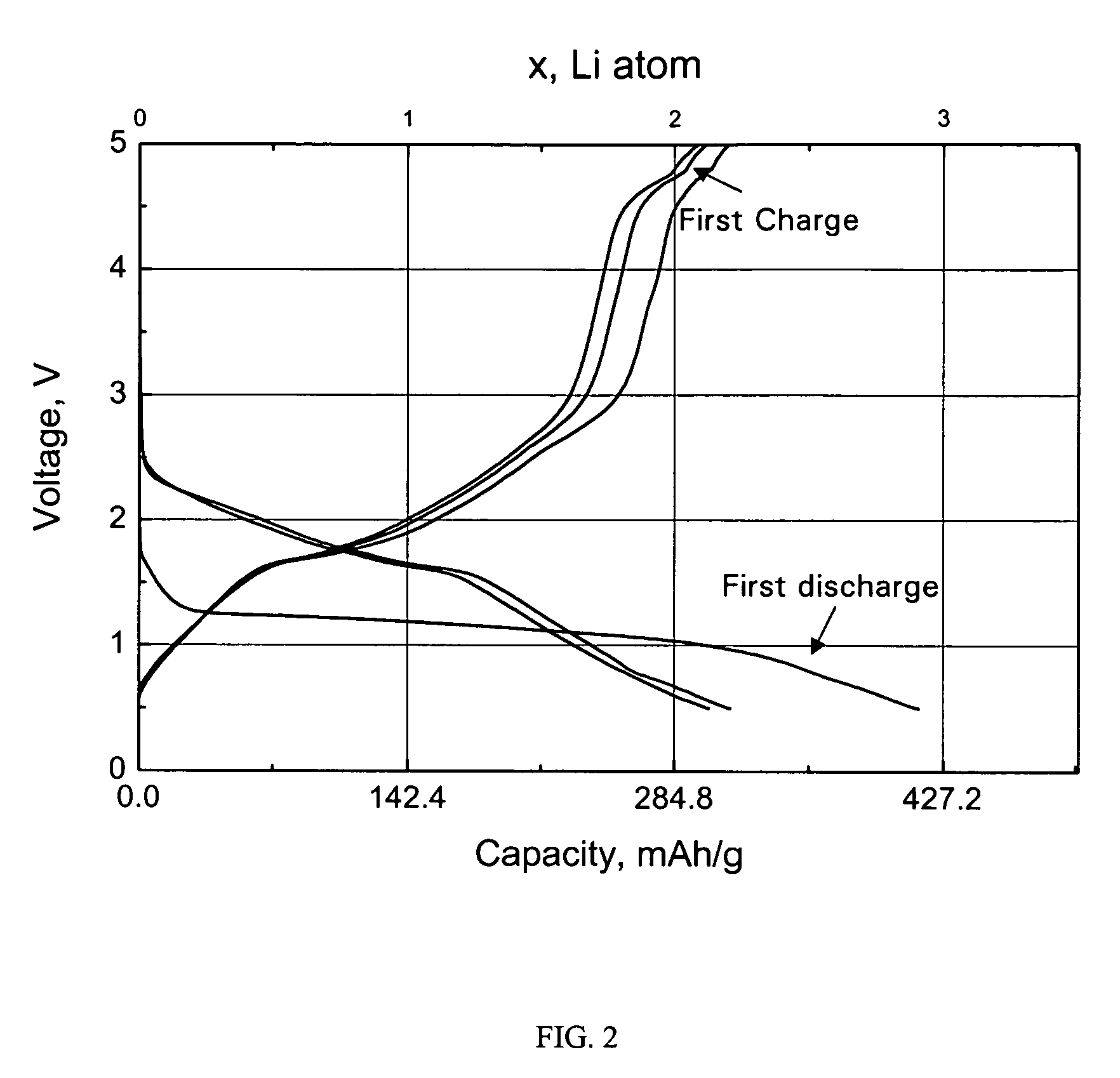Nickel-titanium-phosphate cathodes
a technology of phosphate cathode and nickel titanium, which is applied in the direction of silicon compounds, silicates, cell components, etc., can solve the problems of lithium being very reactive, lithium has well-known drawbacks, and create inflammability concerns, so as to improve the electrical conductivity, and accelerate the electrochemical reaction kinetics
- Summary
- Abstract
- Description
- Claims
- Application Information
AI Technical Summary
Benefits of technology
Problems solved by technology
Method used
Image
Examples
example 1
[0024]Ni0.5TiOPO4 was synthesized according to the following method. A stoichiometric mixture of NiO, NH4H2PO4 and TiO2 was progressively heated at 450° C. for 12 h to allow the integration of the phosphate source. After grinding, the powder was sintered at 950° C. for 24 h. A green fine powder was then obtained and was analyzed by X-ray diffraction (XRD).
[0025]A solution of NiCl2 6H2O or Ni(NO3).6H2O and NH4H2PO4 was slowly added to a solution of Ti(IV)[OCH(CH3)2]4 which induces the precipitation of a gel. After drying at 100° C. for 12 h, the resulting powder was progressively heated up to 950° C.
[0026]Electrodes were made by coating a paste of Ni0.5TiOPO4 active materials, super-P carbon as a conducting additive, and polyvinylidene fluoride (PVdF) binder (80:10:10 wt %) on a aluminum foil collector. The loading amount of the active material was 4-5 mg / cm2. The electrolyte was 1 M LiPF6 in a (1:1 wt %) mixture of ethylene carbonate (EC) and diethyl carbonate (DEC). The cells were ...
PUM
| Property | Measurement | Unit |
|---|---|---|
| wt % | aaaaa | aaaaa |
| current density | aaaaa | aaaaa |
| conductive | aaaaa | aaaaa |
Abstract
Description
Claims
Application Information
 Login to view more
Login to view more - R&D Engineer
- R&D Manager
- IP Professional
- Industry Leading Data Capabilities
- Powerful AI technology
- Patent DNA Extraction
Browse by: Latest US Patents, China's latest patents, Technical Efficacy Thesaurus, Application Domain, Technology Topic.
© 2024 PatSnap. All rights reserved.Legal|Privacy policy|Modern Slavery Act Transparency Statement|Sitemap



